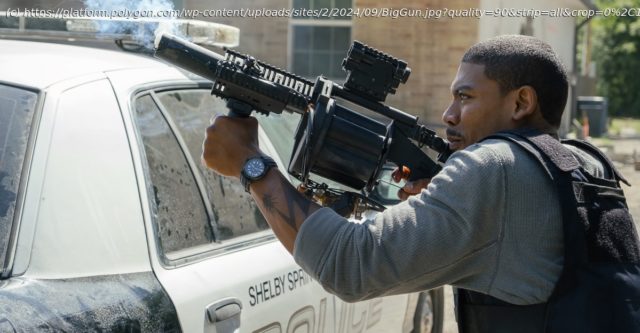Director Jeremy Saulnier (Blue Ruin) explains Rebel Ridge’s ending, from the cathartic finale to the “sloppy, awkward” action. Streaming on Netflix now.
Jeremy Saulnier’s supremely tense new Netflix movie Rebel Ridge sits firmly in the action category. But where stylized hit actioners like the John Wick series or the HiGH&LOW movies get their mileage from over-the-top action stunts, the throwdowns in Rebel Ridge are simple and streamlined enough to feel entirely believable.
Previous standout Saulnier movies like Blue Ruin and Green Room handle violence in graphic, gory ways, but they ground bloody conflict in reality. Rebel Ridge has more of a blockbuster build than those films in terms of its direction and its ending. But still, the fights are, as Saulnier repeatedly put it in a preview with Polygon, consciously and intentionally “sloppy.”
“I can watch an action hero take out an entire building of people, and I’m impressed with the stunt work,” Saulnier says. “The choreography is mind-blowing, and I love taking that ride. But I really don’t feel much. I don’t feel the harrowing nature of what one might experience going up against another human. So with [Rebel Ridge’s] choreography, I was always there to thwart the stunt team’s efforts to make things cooler, bigger, more satisfying. Like, ‘Take it down a notch!’ or ‘I don’t think that would happen!’ I was always there to, like, make it sloppy and awkward.”
[Ed. note: Spoilers ahead for Rebel Ridge.]
Rebel Ridge stars The Underground Railroad’s Aaron Pierre as Terry Richmond, a Black Marine veteran and martial-arts instructor visiting a small Southern town to bail his cousin out of jail. He’s operating on a strict deadline, with his cousin’s life at stake, but the white local police start harassing him the second he arrives in town, stealing his bail money under the pretense of civil asset forfeiture and threatening him with jail or worse if he pushes back.
Home
United States
USA — software Rebel Ridge needed ‘sloppy, awkward’ action, says director Jeremy Saulnier






